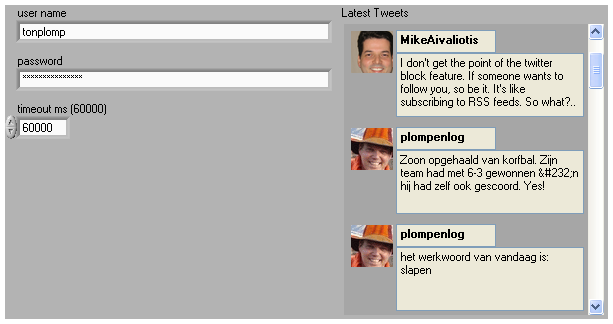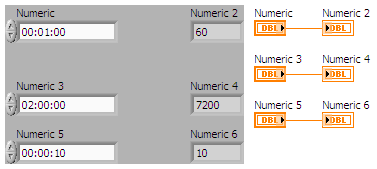
LAVA 1.0 Content
-
Posts
2,739 -
Joined
-
Last visited
-
Days Won
1
Content Type
Profiles
Forums
Downloads
Gallery
Posts posted by LAVA 1.0 Content
-
-
QUOTE (menghuihantang @ Feb 13 2009, 06:43 PM)
See the 'http://zone.ni.com/reference/en-XX/help/371361D-01/TOC32.htm' target="_blank">How LabVIEW Stores Data in Memory' knowledge base article.
Ton
-
That fully depends on what kind of advanced stuff you do with DAQ.
Simple read/write is quite easy to convert.
Ton
-
The LabVIEW options dialog box has options to exclude vi.lib and instr.lib from Source Code Control add actions.
I have been requesting to extend this to user.lib as well for ages.
I even filed a bug report once
 .
.Do we need this feature?
I am in need of this feature because I like the option to include all dependencies when adding a single file to SCC, however it also tries to add all the user.lib (which shouldn't be in SCC IMHO), this can't be added since it is outside the SCC scope and results in error messages.
Is it that much work to extent this feature (or even make an option to exclude a whole custom folder).
Ton
-
QUOTE (Aristos Queue @ Feb 10 2009, 04:28 PM)
But your list does raise a related question: Why the heck would you want a random namespace??? I can understand a GUID or a version or somesuch, but random?Uhm, I even checked to see if the feature was really available and not made up by me.
But yes the feature is available, but I have never used it, maybe just for kicks.
Ton
-
QUOTE (Daklu @ Feb 10 2009, 02:11 AM)
- Cons: I'd have to write a OGB script to perform the translation during the build, which I'm not sure is possible without altering OGB source code. I'd probably also write a small library that looks up and performs the translation transparently. Encapsulation leads me to want to include the translation library as part of the class source code, but that ties class functionality to a file created during the build process.
OpenG builder post-build files have the info you need (pre-build names and post-build names.
QUOTE (Aristos Queue @ Feb 10 2009, 11:35 AM)
EveryLV8.x release has included features designed to eliminate the need for prefixing. If you're still needing it, then clearly there is something that the R&D team does not understand about LabVIEW and how our users are using it, because there's general agreement on the team that the tools exist now (8.6) such that you shouldn't have any reason to keep using prefixes. This should probably move to a new thread, rather than hijack Daklu's original question about how to deal with this, but a detailed list of why, between the project application instance isolation and the library namespacing, prefixing for distribution is still necessary.The options in OpenG builder are a little bit more advanced:
- Prefix or postfix
- Optional random namespace
- Next release of OpenG builder allows to namespace the library files only
- Optional random password
- Pre and postbuild VIs (to alter description for instance)
- Version info on source distribution builds
- Pure G version info
Ton
-
The OpenG application palette have VIs to 'unmangle' or 'mangle' file names.
The next release of OpenG builder will optionally only mangle the name of the library not the files inside the libraries (like AQ proposed)
Ton
-
QUOTE (David Wisti @ Feb 9 2009, 10:34 PM)
QUOTE (Chris Davis @ Feb 10 2009, 04:12 AM)
I've had it working in every version of LabVIEW I've tried since 7 (7, 7.1, 8.0, 8.2, 8.5). I didn't do anything special, just added the keywords as properties within TortiseSVN's panel in a file's properties, then did a commit.Strange, I used LabVIEW 8.6 with exactly the same text on the FP as on the VI description. It only worked on the VI description.
Than I looked at the contents of the ctl-file and noticed the text only once in the binary stream.
So I removed the tokens from the VI description and the strings were gone from the actual VI file.
Maybe an optimization on LabVIEW's part.
Ton
-
QUOTE (CraigGraham @ Feb 9 2009, 11:23 AM)
I just tested this and it should work in LV 8.6.
http://lavag.org/old_files/post-3370-1234221191.zip'>Download File:post-3370-1234221191.zip
-
QUOTE (Donald @ Feb 6 2009, 01:33 PM)
QUOTE (Chris Davis @ Feb 7 2009, 08:45 PM)
I'm doing this now and it takes no special code modifications whatsoever. Just put the following free label on your front panel, andWhat version of LabVIEW are you using?
QUOTE (Randy @ Feb 9 2009, 04:46 PM)
Any more insight would be appreciated (maybe I'm not finding the correct label).No you are doing it right. LabVIEW doesn't store the FP decoration as ASCII text, however VI descriptions are stored as ASCII text.
This can easily be seen with an hex-editor.
That is exactly the reason it doesn't work.
I assume Chris is using LabVIEW 7, LabVIEW 8 used a new saving technique that reduced file size (I guess zip-compression).
Ton
-
If you edit a page with multiple templates in a row (like the Configuration pages) with the new editor. The layout will be scrambled.
The templates will be prepended next to each other with a space in between. The space should be replaced by a new-line.
A workaround:
after editing with the new editor, switch to wiki view copy the contents to a text editor and do a search and replace on }}/s{{ and replace that with }}/n/n{{ with notepad++ for instance.
Using the double /n delimiter will make sure the enter stays in place.
Ton
-
-
A task will make sure that the channels will be read using the same clock.
I came to the conclusion that MAX is a great tool to manage DAQ configurations, it took me a while to get hooked but I love it.
Using global channels with scales and stuff, very easy to change a sensor, the only thing you need to do is adjust the scale!
Ton
-
QUOTE (tilli @ Feb 6 2009, 01:21 PM)
hello,please contact me if you want any more information
samia
If you think you have information that helps us better understand your problem, always append it.
Include links to items you refer to (what is tshark's ring buffer?) to help us understand.
If you have some code that is a big plus!
Ton
-
QUOTE (Ton @ Feb 6 2009, 01:50 AM)
Check ftp://evalftp86:LabV13w86@ftp.ni.com/' target="_blank">here
-
So the 8.6.1 documents are coming:
Anybody found the actual cds/dvds?
Ton
-
In one of our applications,we are measuring temperature.We configured DAQ mx VI in AI Temperature,thermocouple.We are measuring temperature based on type and units as per the user configuration.For all thermocouple types except B Type,DAQ mx Read VI is giving correct values based on the range user configured.But,for B Type thermocouple,after 200 degrees to 300 degrees only,DAQ mx Read VI is giving correct values.If we source 0 degrees,DAQ mx Read VI is not giving any value.If we give 5 degrees to 90 degrees its showing temperature from 100 to 101 degrees.If we give 100 degrees,its showing 125 degrees.After 200 degrees only,DAQ mx Read VI is giving correct values.But range for a B Type thermocouple is -250 degrees to 1830 degrees.Is there any limitation in the measurement of temperature of a thermocouple of B Type?
Regards,
Naresh.N
-
<Shift-right-click> brings up the palette and you can select the paint tool.
Ton
-
-
-
QUOTE (GraemeJ @ Feb 5 2009, 01:21 AM)
Any suggestions on how this would used with a user interface which hasmultiple tab pages, and different controls and indicators on each page?
Regards,
GraemeJ.
Face it, the user has one FP, so one event structure for FP events will be fine.
The processing could be done in consumer loops.
Ton
-
-
You started a so called 'Category' page. This special page is like an index to all pages that contain the [[Category:xxxx]] tag.
Your page is located at Application_instance, I added the page to the Category:Application_Control.
Ton
-
-
Here is a VI to get the 'friends timeline' of some user:
 </p>
</p>There are some dependencies:
-JKI XML toolkit
-OpenG picture Toolkit
-NI Internet Toolkit (for getting the user image)
Apart from the XML toolkit those should be quite easy to bypass.
Download File:post-2399-1233427687.llb
Ton<p>


what is the counterpart in labview for VB Byte type
in Calling External Code
Posted
LabVIEW is preparing the data fed to the Call Library Node so that it matches the datatype the Library is expecting.
For instance if it is given a U8 and the function needs a Pointer to an U8, LabVIEW will setup some memory space exclusively for that Library Call and sent the memory location (32-bit) to the Library.
For strings the same thing happens, only for C-strings they remove the upper four bytes (the size) and terminate the string with a NULL byte. Then the starting memory address (eg. pointer) is sent to the Library. (at least that is what I think is happening, Rolf will be of much more value)
Ton